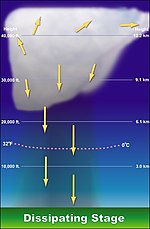
QUESTION 3
The greenhouse effect is the process in which the emission of infrared radiation by the atmosphere warms a planet's surface. The name comes from an incorrect analogy with the warming of air inside a greenhouse compared to the air outside the greenhouse. The greenhouse effect was discovered by Joseph Fourier in 1824 and first investigated quantitatively by Svante Arrhenius in 1896. (1)

When sunlight reaches the surface of the Earth, some of it is absorbed and warms the surface. Because the Earth's surface is much cooler than the sun, it radiates energy at much longer wavelengths than the sun does, peaking in the infrared at about 10 µm. The atmosphere absorbs these longer wavelengths more effectively than it does the shorter wavelengths from the sun. The absorption of this longwave radiant energy warms the atmosphere. (1) And If global warming continues at its current pace, by 2100 Earth could be up to 8 degrees Fahrenheit warmer than it is today. (2)
BIBLIOGRAPHY
(1) http://www.wikipedia.com/
The greenhouse effect is the process in which the emission of infrared radiation by the atmosphere warms a planet's surface. The name comes from an incorrect analogy with the warming of air inside a greenhouse compared to the air outside the greenhouse. The greenhouse effect was discovered by Joseph Fourier in 1824 and first investigated quantitatively by Svante Arrhenius in 1896. (1)

When sunlight reaches the surface of the Earth, some of it is absorbed and warms the surface. Because the Earth's surface is much cooler than the sun, it radiates energy at much longer wavelengths than the sun does, peaking in the infrared at about 10 µm. The atmosphere absorbs these longer wavelengths more effectively than it does the shorter wavelengths from the sun. The absorption of this longwave radiant energy warms the atmosphere. (1) And If global warming continues at its current pace, by 2100 Earth could be up to 8 degrees Fahrenheit warmer than it is today. (2)
BIBLIOGRAPHY
(1) http://www.wikipedia.com/
no copyright
(2) http://www.foxnews.com/story/0,2933,188940,00.html
© 2008 FOX News Network, LLC. All rights reserved. All market data delayed 20 minutes.
(2) http://www.foxnews.com/story/0,2933,188940,00.html
© 2008 FOX News Network, LLC. All rights reserved. All market data delayed 20 minutes.






